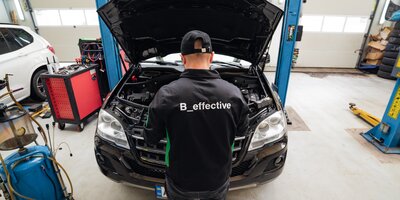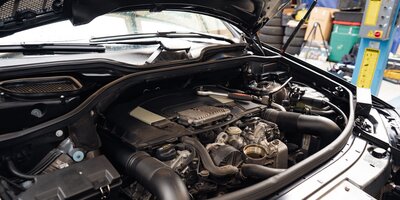Ali motorno olje vpliva na hrup motorja? Ja, res je!
Over many decades, there has been an apparently never ending debate among lubrication experts as to the influence of crankcase lubricant on engine noise, in which opinions often substitute facts, and no consensus has been reached so far. This strange situation – best described by a famous phrase “a little knowledge is a dangerous thing” - is about to change as Noise, Vibration, and Harshness (NHV) aspects are getting increased attention from carmakers, motivating more fundamental research efforts. In recent years, acoustic emission measurements have become a routine tool for condition monitoring, and a number of studies have been carried out to apply this technique in order to investigate the influence of different factors on the noise level of car engines. Furthermore, since today’s customers are a lot more demanding to the car interior sound comfort, numerous psychoacoustic experiments have also been conducted to analyze different categories of unwanted sounds including rattling, creaking, squeaking and switch sounds.

These studies prove conclusively that the engine noise remains one of the decisive factors affecting driver’s and passengers’ comfort and their perception of car quality. The car interior noise always increases with the engine speed, for instance, when accelerating rapidly. It can be pleasing or irritating: The silky smooth baritone of a naturally aspirated V8 is perceived to be more pleasant than the scream of a boosted i4 motor. However, at motorway cruising speeds, wheel and wind noise becomes dominant. Lacking any well defined technical quantifiers of “pleasure” and “irritation”, lubricant manufacturers often resort to using an obscure term “feel factor” in order to describe the effect of lubricant of engine noise and its subjective perception by driver and passengers. There are several factors contributing to the acoustic emission spectrum, such as valves opening and closing, especially when hydraulic lifters are used, fuel combustion, piston slap, roller bearings used for supporting camshafts and balancing shafts in some engines, oil pump, water pump, generator, exhaust, fan, etc. These sources may interfere with each other, as well as with vibrations due to accelerating and decelerating masses (valves, lifters, pistons, connecting rods, crankshaft, etc.), producing a unique acoustic signature, including multiple resonant frequencies and overtones.

FIGURE 1 / Acoustic spectrum of Volvo 2.5L i5 engine at 3000 rpm (gentle acceleration). BIZOL G+ motor oil with COMB LubriBoost™ technology helps reduce engine noise in the band 200 to 2000 Hz.
Different engine lubricants have different properties. As the engine noise is concerned, the most important property is the viscosity grade. Higher viscosity oils require a higher pressure head to be pumped through oil channels. On the other hand, they build a thicker lubricant film providing a greater sound damping effect. Think of a simple experiment: take a glass and hit it gently with a teaspoon – you will hear a characteristic “ding” sound. Now wrap the glass in an insulating tape to simulating the effect of the lubricant film, and hit it again – the sound has gone! Hence, acoustic emission measurements will easily detect a lack of lubrication due for instance to low oil pressure or low oil level. Acoustic emission can also be used to pin-point the onset of lubricant film failure, as some characteristic frequencies emerge due to unlubricated metal-metal contacts. Apart from the viscosity grade, different lubricant formulations differ significantly in terms of lubricant film strength. In particular, full synthetic formulations may provide a lubricant film strength upto two times higher than their mineral based analogues of the same viscosity grade. This effect can be further boosted by using special additives. For instance, Castrol uses a special film strength technology dubbed FST in their Titanium Edge products, and we use proprietary BIZOL COMB LubriBoost™ and W-guard™ technologies to push boundaries of lubricant film strength to the maximum in our G+ line of top-tier motor oils.

FIGURE 2 / Acoustic spectrum of common car interior noises. Courtesy of Kang-Duck Ih, Hyundai Motor Group, and Youngkey K. Kim, SM Instruments Co., Ltd.
The result you should experience yourself: BIZOL G+ motor oils do indeed make your engine run more quietly, effectively suppressing the most irritating high frequency noise emission. BIZOL G+ oils also provide superior engine protection and driver experience in urban driving, where engine noise is more intruding than wind or wheel noise you experience on highway (the latter is not affected by lubricant, anyway).
Morda vam bo všeč tudi

Sodobno čudo motorja z notranjim zgorevanjem poganja naša vozila ter zagotavlja moč in zanesljivost, na katero se zanašamo pri vsakodnevnem prevozu. Vendar, tako kot karkoli drugega, kar je podvrženo stalni uporabi, motorizirane enote sčasoma doživljajo obrabo. Poslabšanje komponent lahko pomembno vpliva na zmogljivost in dolgoživost. V tem članku se bomo poglobili v zapletenost pomena obrabe motorja, raziskali različne vzroke za to, zagotovili uporabne nasvete za zmanjšanje in preprečevanje. Poleg tega si bomo ogledali, kako specializirana motorna olja, kot je BIZOL, igrajo ključno vlogo pri varovanju zdravja vašega motorja. Začnimo z razumevanjem, kaj je obraba motorja in dejavniki, ki prispevajo k njej.

Melodično predenje motorja, žameten prehod zobnika in elegantno potovanje po obsežni avtocesti – to so nezgrešljive značilnosti natančno umerjenega samoprestavnega menjalnika. Toda kaj se zgodi, ko motorizirani ansambel omahne, zobniki škripajo in potovanje zavije v nepredvideno vihar? Vstopite v področje težav s samodejnim menjalnikom, področje, kjer se ljubitelji avtomobilov in vsakodnevni vozniki srečujejo z skrivnostnimi zapletenostmi tega zapletenega sistema.

Vožnja je mešanica vznemirjenja in udobja, včasih pa lahko vaš zaupanja vreden avto zadene uganko. Ena najbolj frustrirajočih težav je puščanje hladilne tekočine.
Hladilna tekočina, pogosto imenovana vsestranski "antifriz", prevzame neslavno vlogo avtomobilskega varuha, ki zagotavlja harmonično delovanje vašega motorja. Ta skromna tekočina stoji kot branik pred žgočo poletno vročino in zimskim mrazom, ki hladi kosti. Kljub temu, ko budnost antifriza izgine in se odpravi na nepooblaščeno potovanje onkraj svojih meja, se pojavijo zlovešče težave.

